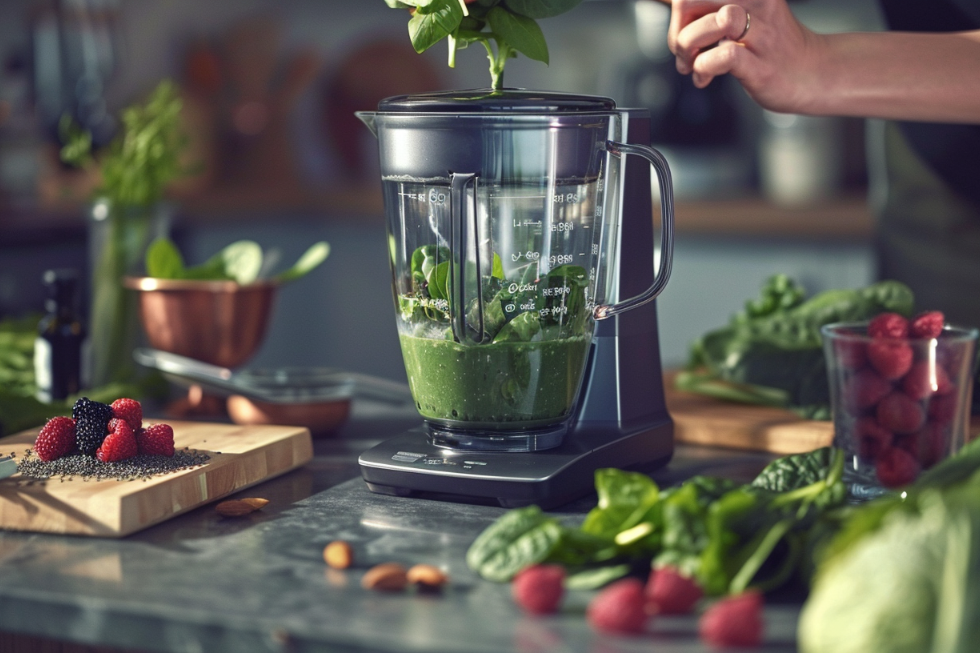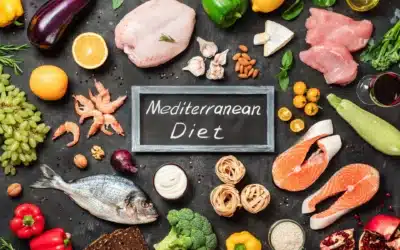Introduction to GLP-1 and Its Importance
Maintaining optimal health is a goal many of us strive for, and understanding the role of various hormones in our bodies can significantly contribute to this objective. One such hormone is Glucagon-Like Peptide-1, or GLP-1. This incretin hormone is essential in regulating blood sugar levels, promoting satiety, and facilitating weight management. Higher GLP-1 levels are linked to improved metabolic health, making it a crucial focus for those aiming to enhance their overall well-being.
In this article, we’ll explore the top 10 superfoods that can naturally boost your GLP-1 levels. By incorporating these nutrient-dense foods into your diet, you can support your body’s hormonal balance and enjoy the numerous health benefits that come with elevated GLP-1. From leafy greens to legumes, discover how these foods can help you achieve optimal wellness.
Please copy this section into your draft document and confirm when you are ready to proceed with the detailed segment on the first outline point.
Leafy Greens: The GLP-1 Boosting Power of Spinach and Kale
Leafy greens, such as spinach and kale, are nutritional powerhouses that can significantly boost your GLP-1 levels. These vegetables are rich in vitamins, minerals, and fiber, making them an excellent addition to any diet. Spinach and kale, in particular, stand out for their ability to enhance GLP-1 production.
Nutritional Benefits of Spinach and Kale
Spinach is packed with essential nutrients, including vitamins A, C, and K, as well as folate and iron. Kale, often touted as a superfood, offers a similar nutrient profile with high levels of vitamins A, C, K, and B6, along with calcium, potassium, and magnesium. The fiber content in these greens aids digestion and helps maintain steady blood sugar levels, which is crucial for GLP-1 regulation.
How These Leafy Greens Enhance GLP-1 Levels
The high fiber content in spinach and kale slows down the digestion process, allowing for a gradual release of glucose into the bloodstream. This slow release helps stimulate the production of GLP-1, which in turn regulates blood sugar levels and promotes a feeling of fullness. Additionally, the antioxidants and phytonutrients found in these greens support overall metabolic health, further enhancing GLP-1 activity.
Tips for Incorporating More Leafy Greens into Your Diet
- Smoothies: Blend spinach or kale into your morning smoothie for a nutritious start to your day.
- Salads: Add a handful of fresh spinach or kale to your salads for a nutrient boost.
- Soups and Stews: Incorporate chopped spinach or kale into soups and stews for added flavor and health benefits.
- Stir-Fries: Toss spinach or kale into your stir-fries for a quick and easy way to increase your vegetable intake.
- Wraps and Sandwiches: Use spinach leaves or kale as a base for wraps and sandwiches to add a crunchy texture and extra nutrients.
By making leafy greens like spinach and kale a regular part of your diet, you can naturally boost your GLP-1 levels and enjoy the numerous health benefits that come with it.

Berries: Antioxidant-Rich Boosters of GLP-1
Berries are not only delicious but also packed with antioxidants and nutrients that can significantly enhance GLP-1 levels. Incorporating berries into your diet is a tasty and effective way to support your metabolic health.
The Role of Berries in Promoting GLP-1 Production
Berries such as blueberries, raspberries, and strawberries are rich in antioxidants, vitamins, and fiber. These components work together to boost GLP-1 production in the body. The high fiber content helps slow down digestion, leading to a more gradual release of glucose into the bloodstream. This slow release triggers the secretion of GLP-1, which aids in regulating blood sugar levels and increasing satiety.
Specific Types of Berries and Their Benefits
- Blueberries: Known for their high levels of antioxidants, particularly anthocyanins, blueberries can help reduce inflammation and improve insulin sensitivity, contributing to higher GLP-1 levels.
- Raspberries: These berries are rich in fiber and vitamin C, supporting digestive health and enhancing GLP-1 production.
- Strawberries: Strawberries provide a good source of vitamin C, manganese, and fiber, all of which play a role in promoting GLP-1 secretion and overall metabolic health.
Easy Ways to Add Berries to Your Meals
- Smoothies: Blend a mix of blueberries, raspberries, and strawberries into your morning smoothie for a nutrient-packed start.
- Breakfast Toppings: Sprinkle berries over your oatmeal, yogurt, or cereal to add flavor and health benefits.
- Snacks: Enjoy a handful of fresh berries as a convenient and healthy snack.
- Desserts: Use berries to create healthy desserts like parfaits, fruit salads, or even as a topping for low-sugar cakes.
- Salads: Add berries to your salads for a burst of sweetness and a nutritional boost.
By incorporating these antioxidant-rich berries into your diet, you can naturally increase your GLP-1 levels and enjoy the associated health benefits.
Nuts and Seeds: A Crunchy Way to Enhance GLP-1
Nuts and seeds are not only tasty and versatile but also packed with nutrients that can help boost GLP-1 levels. Including a variety of nuts and seeds in your diet is a simple and delicious way to support your metabolic health.
Health Benefits of Nuts and Seeds
Nuts and seeds are rich in healthy fats, protein, fiber, vitamins, and minerals. These nutrient-dense foods provide numerous health benefits, including improved heart health, better blood sugar control, and enhanced satiety. The combination of fiber and healthy fats helps slow down digestion, which can promote the release of GLP-1.
How Nuts and Seeds Contribute to Increased GLP-1 Levels
The high fiber content in nuts and seeds helps regulate blood sugar levels by slowing the absorption of glucose into the bloodstream. This gradual absorption triggers the secretion of GLP-1, which aids in maintaining stable blood sugar levels and prolongs the feeling of fullness. Additionally, the healthy fats in nuts and seeds support overall metabolic health, further enhancing GLP-1 production.

Legumes: Beans and Lentils for a GLP-1 Surge
Legumes, including beans and lentils, are a fantastic source of nutrients that can significantly boost GLP-1 levels. These versatile and affordable foods are a staple in many diets worldwide and offer numerous health benefits.
Nutritional Profile of Beans and Lentils
Beans and lentils are rich in protein, fiber, vitamins, and minerals such as iron, magnesium, and potassium. They are also low in fat, making them a heart-healthy choice. The high fiber content in legumes is particularly beneficial for maintaining steady blood sugar levels, which is essential for GLP-1 production.
Impact on GLP-1 Production
The fiber in beans and lentils slows down the digestive process, leading to a gradual release of glucose into the bloodstream. This gradual release helps stimulate the secretion of GLP-1, which aids in blood sugar regulation and enhances satiety. Additionally, the protein content in legumes supports muscle maintenance and overall metabolic health, further promoting GLP-1 activity.
The Mediterranean diet is a real culinary treasure. Centered around foods like fruits, vegetables, olive oil, and lean proteins, this diet has been linked to numerous health benefits. From reducing the risk of heart disease to supporting cognitive function, the Mediterranean diet is a flavorful and scientifically-supported path to a healthier lifestyle.
Delicious Recipes and Meal Ideas Featuring Legumes
- Bean Salads: Create a colorful and nutritious bean salad using a mix of kidney beans, black beans, and chickpeas, dressed with olive oil, lemon juice, and fresh herbs.
- Lentil Soup: Prepare a hearty lentil soup with vegetables like carrots, celery, and tomatoes for a comforting and healthy meal.
- Bean Burritos: Make bean burritos using whole-wheat tortillas, refried beans, avocado, and your favorite vegetables for a satisfying and protein-packed meal.
- Lentil Stew: Cook a flavorful lentil stew with spices like cumin, turmeric, and coriander, along with potatoes and spinach for added nutrients.
- Hummus: Blend chickpeas with tahini, garlic, lemon juice, and olive oil to make a delicious and versatile hummus dip.
Incorporating legumes into your diet can naturally boost your GLP-1 levels and provide a wide range of health benefits.
Conclusion
Boosting your GLP-1 levels naturally through diet can significantly enhance your overall health and well-being. By incorporating nutrient-dense foods like leafy greens, berries, nuts, seeds, and legumes into your daily meals, you can support your body’s GLP-1 production and enjoy the many benefits that come with it. These foods not only help regulate blood sugar levels and promote satiety but also provide essential vitamins, minerals, and antioxidants that contribute to optimal metabolic health.
Embrace these superfoods as part of a balanced diet and experience the positive impact they can have on your energy levels, weight management, and overall wellness. Remember, small dietary changes can lead to significant health improvements, making it easier for you to maintain a healthy and vibrant lifestyle.



















